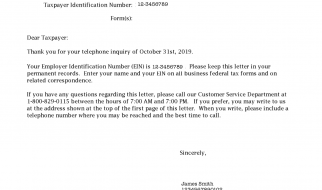The terms marketing and advertising are often used interchangeably.
And while these two concepts are related, there are some critical differences to be aware of when strategies are planned, and decisions are made on how to attract the attention of consumers.
For instance, radio, TV, and digital are common forms of advertising.
Yet how a brand is marketed across all of those medias is very different than how an ad would be presented.
While objectives of marketing and advertising often have similar goals (e.g., generating interest, encouraging conversions), there are distinct differences that need to be clarified and explained.
Advertising is defined as the paid, non-personal distribution of a persuasive message with the purpose of promoting products or services to current or potential customers.
Advertising focuses on a particular message that?s not all that personal in nature.
It is a process that includes:
? Ad placement (newspapers, TV, direct mail, billboards, radio, online)? Frequency of ads displayed? Tracking of results from ads placed or displayed
Marketing is the process of taking goods or services from the concept phase to the point where customers will want to purchase those goods or products from an individual business or brand.
It?s how a brand communicates to its audience in a way that?s more personal beyond trying to sell a particular product or service.
Related Article: How To Create Effective Marketing Materials
Marketing involves:
? The Four Ps: product, price, place, and promotion? Strategy development and execution? Ongoing communications and sustained audience engagement
Advertising is one component of the marketing process.
In fact, it is the largest marketing-related expense a business will have just behind public relations, which represents another chunk of the marketing pie.
As with marketing, advertising also creates awareness; although the primary goal is to influence buying behaviours.
Think about your favourite brands.
The reason why you may prefer Pepsi over Coca-Cola, Pizza Hut over Papa John?s, or Walmart over Target is that of marketing.
All of those Super Bowl commercials you remember with fondness are the result of creative advertising efforts.
What Is An Advertising Strategy?

An ad strategy is an overall plan for a particular ad campaign.
It encompasses specific tactics designed to meet the goals and objections determined as part of the process of putting together an advertising strategy.
It should support the overall marketing strategy, which supports a brand?s even broader business plan.
To carry out an ad strategy, a series of tactics will need to be done to present products or services to an audience that may be receptive to what?s offered.
Advertising and its possible strategies are a subset of marketing and its related strategies.
With advertising, it is important to find the right ?media mix? with tactics that may include online advertising, billboards, magazines, TV, radio, and direct mail rather than relying solely on one form of media.
An effective ad strategy is also one that includes:
? Determining the right frequency to ads to avoid spreading the allotted ad budget too thin? Selecting the right media mix? Using media that targets the primary audience/consumer group? Hitting target demographics repeatedly to keep the featured products/services visible
Related Article: First impressions
What Is An Effective Advertising Strategy?
An effective advertising plan or strategy starts with developing an understanding of where a particular product or service currently stands in the marketing; regarding both perception and market share (demand).
An effective ad strategy can be broken down into four steps:
1. Clearly defining business goals2. Identifying behaviour changes necessary to achieve those goals3. Selecting the appropriate behavioural strategy (what will likely convince a consumer to make a purchase)4. Developing creative ideas based on the selected behavioural strategies
As with marketing, advertising also involves knowing your target audience.
With advertising, this means knowing how target consumers spend their free time, what they prefer to read, where they tend to go online, where they likely work, and even things like what colour t-shirts they like to wear.
An ad strategy should also include a determination of:
? Where a product or service stands in the marketplace (customer perception, market share)? Primary and secondary target audiences for a product or service? Which media channels (print, broadcast, online, etc.) will likely reach those target audiences? Markets that should be targeted with various media and how much should be spent on such efforts in each market? Specific selling points that will be emphasised in ads? How well ad copy/content tested before fully launching a campaign? How effective a campaign was after it was launched (post-analysis)
Types of Advertising Strategies
Specific products or services can be promoted in multiple ways.
Traditional advertising strategies like television and radio ads and billboard advertising that target broader audiences can still be useful if carefully planned.
Ad strategies that are part of a larger marketing strategy may also include:
? Google AdWords (pay-per-click)? Facebook ad strategies specific to highly targeted consumers based on factors like age, income, gender, and location)? Cold calling/emailing? Direct mail? Traditional strategies (television, radio, newspaper)
Advertising strategies can be further broken down by what?s likely to motivate a consumer to have an interest in or what to purchase a particular product.
For instance, the ?utility strategy? focuses on how useful a product is to the consumer.
An example of this is bacon that?s 10 percent leaner than what the competition offers.
Behavioural ad strategies also include:
? Modelling: Using of celebrities or experts.? Reframing: Reshaping general assumptions (?eat baby carrots as junk food?).? Evocation: Tapping into emotions to inspire action.? Collectivism: Reinforcing or creating social norms (?let your inner beauty shine through?).? Skill up: Showing someone how to do something with a product.? Elimination of complexity: Removing barriers to product/service use.? Commitment: Inviting use of smaller service to convince use of a related service (free credit report for an identity protection service).
Related Article: How Custom T-Shirt Design Can Help Promote Your Brand
What Is A Marketing Strategy?

A marketing strategy is a list of goals that are based on an understanding of who the target consumer/user is, what it is they should buy or use, and where they typically go to seek those products and services.
Marketing strategies can be divided into two broad categories:
? Inbound Marketing: An inbound marketing strategy is one where content is placed in front of consumers who are likely to have an interest in a brand, product, or service. Content is aligned with customers? interests with methods that may include social media posts and content that has been optimised for search engines.
? Outbound Marketing: An outbound marketing strategy is one that requires efforts to find potential customers who may be interested in a particular product, service, or brand. This outreach may be in the form of cold calls, post cards, or mass emails.
What Is An Effective Marketing Strategy?
An effective marketing strategy is one backed up by a well-researched marketing plan to achieve the goals that have been established.
There are many cost-effective ways to connect with audiences, especially with digital marketing.
Let?s break it down into five steps:
1. Identifying unique selling points of a brand/business2. Defining the target audience3. Listing the benefits of products and services4. Describing how goods and services will be positioned in the market5. Identifying marketing/advertising methods that are most appropriate (The Internet, direct marketing, PR, etc.)
With the right marketing strategy, both bigger and small brands can effectively compete for the same consumers/audience.
Common marketing strategies include, but certainly, aren?t limited to:
? Producing new content on blogs and websites? Determining the right social media platforms to use for content distribution (e.g., Pinterest and Instagram for images and videos, and Twitter for short announcements)? Organic (keywords, links, relevant content) and paid (pay-per-click) search engine optimisation (SEO)? Local SEO with geographic-specific content? Email marketing with newsletters and emails specific to the recipient? Media mentions and Internet-based PR? Creating ?wow? moments likely to generate buzz (guerilla marketing)? Larger amounts of content in the form of e-books or email newsletters
Related Article: Be Innovative Without Losing Your Audience
Marketing Plan
Planning is doing, as in actually putting those ideas into motion. Think of a marketing strategy as what sets the tone for how a brand interacts with the public.
A marketing plan is an outline of the specific actions that will be taken to achieve those goals and objectives.
A marketing plan includes a detailed analysis of:
? Size/potential of various markets? Who primary/secondary audiences are in each target market? Strengths/weaknesses of distribution channels? Competitors? products and services, especially within the same market(s) with particular attention paid to pricing strategies, incentives, and distribution channels used? What pricing strategies will likely be effective? Results from tracked data (sales, market share)? How much of a budget will be necessary for marketing and promotion efforts
Marketing Tactics
Marketing tactics are practical, tangible, and trackable things that a brand does every day to reach out to its audience (e.g., tweeting, blogging, responding to social media posts, sending out email newsletters).
The primarily available strategies for attracting consumer interest are the same as they have always been since marketing existed.
Tactics, however, are heavily based on technology and trends.
Here?s an example of how strategy and tactics work together:
Goal: Increase year-end revenue by 20 percent.
Objectives: Increase brand awareness by 50 percent and boost website by 25 percent over last year?s results.
Strategy: Focus more on brand messaging across all media, increase social media engagement to direct more traffic to the website.
Tactics: Launch paid Facebook and Twitter ad campaigns, re-write social media profiles, distribute coupon codes in the early afternoon and late evening, and add more relevant images and videos to blog and social media content and include appropriate links back to the website.
Related Article: How Small Businesses Can Work With Designers
Key Takeaways

Creating a marketing plan and strategy is usually going to be a more time-consuming process than creating an advertising campaign.
This is because marketing has a broader scope and involves individual processes like compiling market research, analysing current and potential markets, and positioning and segmentation that require more attention than what?s needed to put together an effective ad campaign.
In a nutshell, here are the key differences between marketing and advertising:
? Advertising is a single component of marketing? Marketing has a broader range that goes beyond promoting a single product or service to include promotion of a particular business or brand? Advertising focuses on the relationship between customers and specific goods or services? Marketing takes into account all interactions between a brand and its intended audience? Advertising supports marketing by creating buzz for a brand?s products or services? Marketing encompasses the overall customer experience with a brand and involves creating consumer relationships beyond the point at which a sale is made
Think of advertising as a piece that fits into the larger marketing puzzle.
The two concepts are related and often linked, but there are important differences to keep in mind when planning strategies, launching campaigns, tracking results, and targeting specific audiences.
Understanding the role of advertising and marketing can ultimately help you achieve one important goal ? reaching out to consumers likely to be interested in what you have to offer.
It?s a goal often made with careful planning, insightful observations, ongoing engagement, and informed decision-making.
Author Bio: Eric Gordon is a business-focused marketing professional based in Houston. His mission in life is to help his clients get quality and consistent leads using the latest online marketing and SEO strategies. In his spare time, he enjoys playing golf and watching sports. Follow him on Twitter at @ericdavidgordon
If you wish to discuss how we can develop your brand or provide graphic design for your product or business, email us at: [email protected]
Inkbot Design is a Creative Branding Agency that is passionate about effective Graphic Design, Brand Identity, Logos and Web Design.
T: @inkbotdesign F: /inkbotdesign


